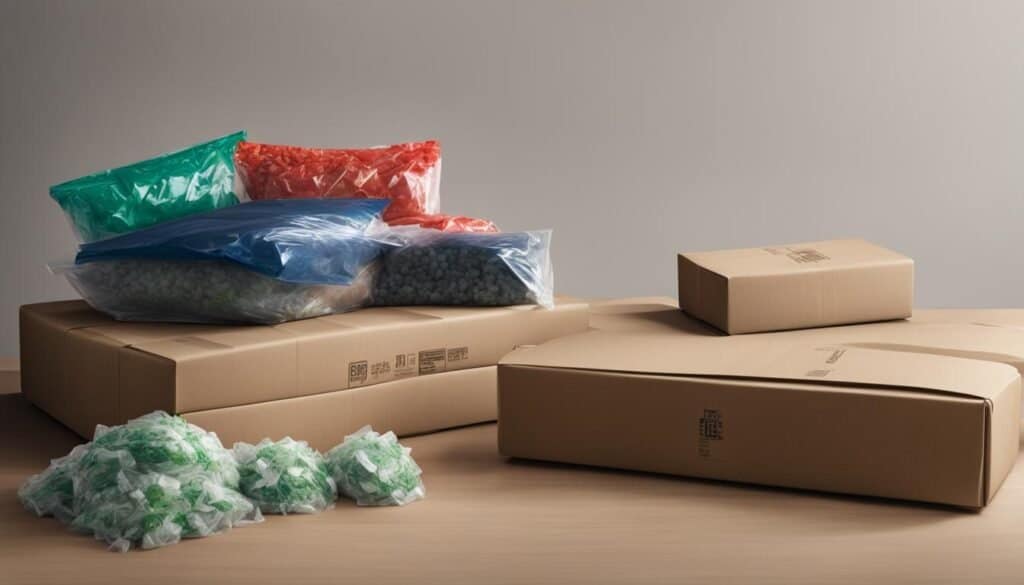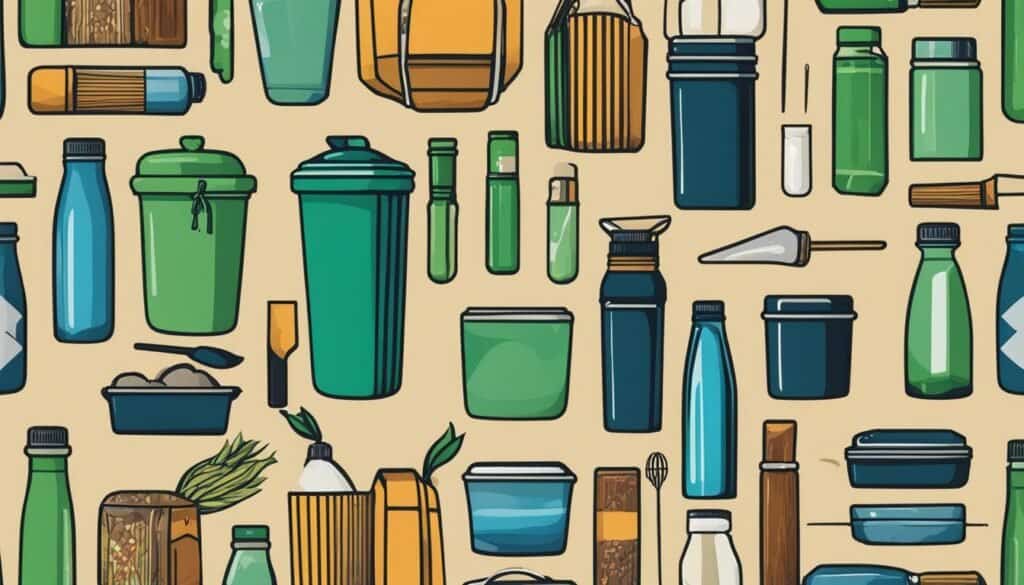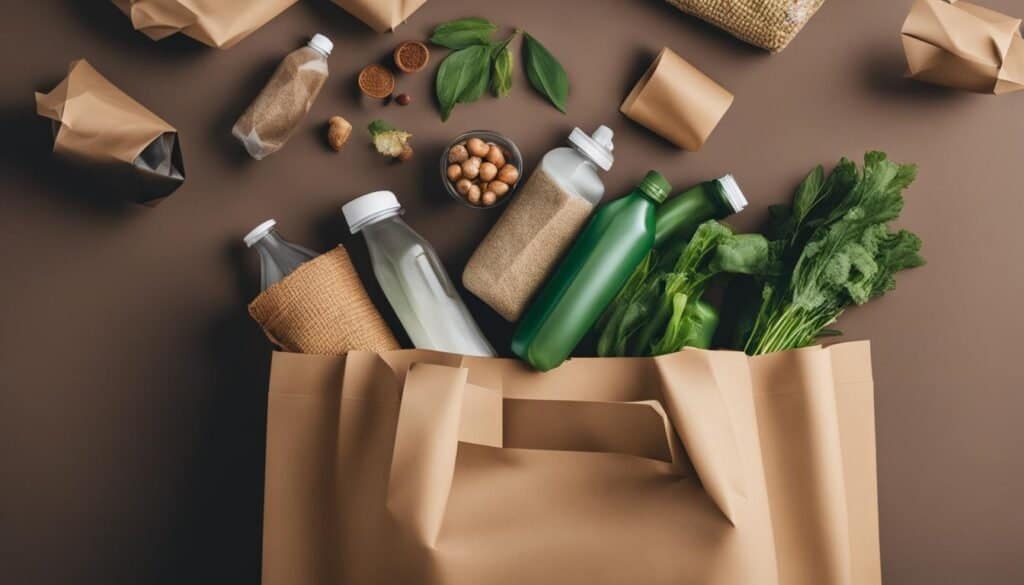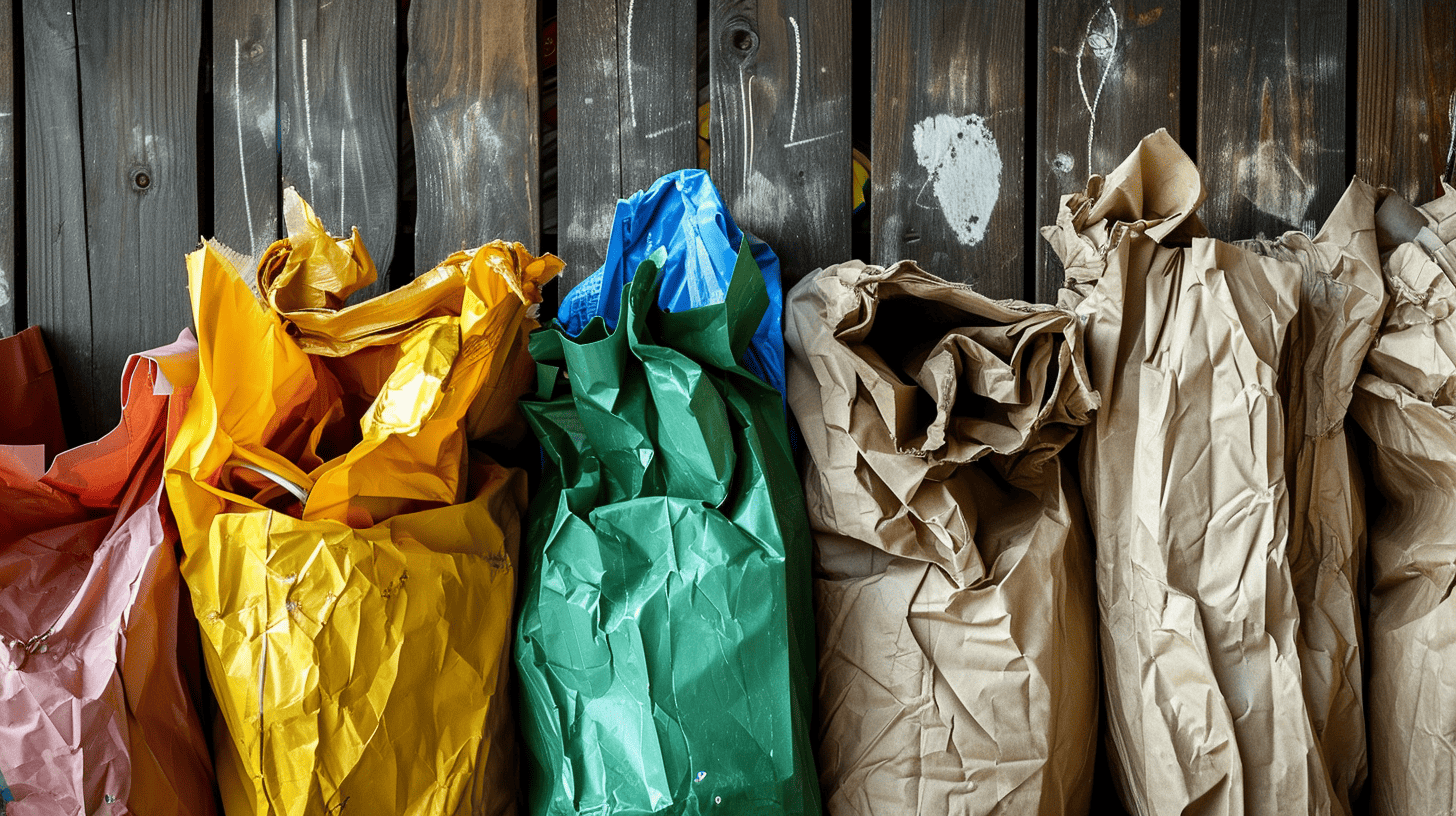It’s no secret that packaging waste is a significant contributor to the growing problem of global waste. In the United States alone, product packaging accounts for a staggering 28.1% of municipal solid waste, totaling nearly 83 million tons per year. With the ongoing rise of e-commerce, packaging waste is only increasing, placing a heavy burden on our landfills and natural resources. However, by making small changes to our packaging processes, each of us can significantly reduce our environmental impact and make a positive difference in moving towards a zero-waste society.
Recognizing the urgent need for change, consumer trends are shifting rapidly, with 60% of people making more sustainable purchases in the wake of COVID-19 and a whopping 90% planning to continue doing so. Furthermore, an impressive 73% of consumers are open to changing their buying habits to adopt more eco-friendly options, with surveys revealing that over half are willing to spend more on products that boast greener, recyclable packaging. This presents a clear market demand for companies that prioritize sustainability and take responsibility for their packaging footprint.
Key Takeaways
- Product packaging constitutes 28.1% of municipal solid waste in the United States.
- Consumer trends indicate a strong preference for sustainable purchasing decisions, particularly in the wake of COVID-19.
- Surveys show that over half of consumers are willing to pay more for eco-friendly, recyclable products.
- Reducing packaging waste is possible through incremental changes in packaging processes, contributing to a zero-waste society.
- Sustainability-focused solutions are gaining traction in the market, presenting opportunities for brands to tap into eco-conscious consumers.
11 Tips for Sustainable Recycling Practices
Here are 11 tips for sustainable recycling practices:
1. Reduce consumption and waste in the first place
The most sustainable option is to not create waste to begin with. Prioritize buying less and seeking out products designed to last.
2. Reuse items when possible
If an item can be repaired or repurposed, reuse it instead of throwing it out. Reusing saves the emissions and energy required to recycle something.
3. Recycle properly
Recycling properly is key – contamination can ruin whole batches. Check local guidelines on what can and can’t be recycled.
4. Buy recycled
Creating demand for recycled goods boosts the economic viability of recycling programs. For example, recycled aluminum requires 95% less energy than creating aluminum products from raw materials.
5. Compost food and yard waste
Composting food scraps diverts them from landfills, where they release methane, a potent greenhouse gas. Home composting could divert 330 pounds per household per year.
6. Support deposit programs
States with bottle deposit programs have 2-3 times higher recycling rates than states without them.
7. Shop in bulk
Buying bulk products with less packaging reduces single-use plastics and waste. Bring reusable containers to cut down on plastic bags.
8. Choose recyclable packaging
Opt for paper, cardboard, and plastic containers labeled with recycling codes #1-5 whenever possible. Avoid mixed materials that complicate recycling.
From GWP Group, design plays a crucial role in reducing packaging waste. They advocate for custom-size packaging to reduce material usage and avoid shipping excess air, which also cuts down CO2 emissions.
9. Recognize wishcycling causes problems
Wishcycling, or trying to recycle non-recyclables, contaminates recycling streams. Double check guidelines before adding items to recycling bins.
10. Donate usable items
Donating old but usable items like furniture and electronics keeps them out of landfills and reduces waste.
11. Be aware of actual recycling rates
While plastic recycling seems ubiquitous, only 5-6% of plastics are currently recycled in the US12. Understanding actual recycling statistics helps avoid wishcycling.
Understanding the Environmental Impact of Packaging Waste
Our modern society generates a staggering volume of packaging waste, contributing to an alarming increase in municipal solid waste and landfill usage. In order to appreciate the urgency for rethinking packaging materials and design, it’s important to evaluate how the landscape has changed over the past decades and to identify the most disruptive sources of packaging waste.
Comparing Waste Generation: 1960 vs Today
From a historical perspective, the amount of packaging waste has dramatically risen over the years. Comparing data from 1960 to today, we see a nearly fourfold increase in packaging waste generation. With the average American producing approximately 4.9 lbs of waste daily, the United States generates close to 300 million tons of waste annually. However, the recycling and composting rate stands at only 32%, indicating a pressing need for more effective strategies to manage packaging waste and reduce our carbon footprint.
The Rise of E-commerce and Its Packaging Footprint
The rapid growth of e-commerce has only compounded the challenge of managing packaging waste. Online shopping’s convenience has led to a surge in product deliveries, increasing the amount of packaging required to ship items to consumers. This escalation in packaging demand directly contributes to growing solid waste and landfill usage, further emphasizing the importance of innovative packaging solutions and recycling systems. To move towards a more sustainable future, it’s crucial to reevaluate our current waste disposal and recycling initiatives.
Understanding these factors is merely the first step in addressing the environmental impact of packaging waste. By adopting more sustainable materials, investing in recycling infrastructure, and educating consumers about the importance of recycling and reusability, we can pave the way for a cleaner, greener future for our planet.
Assessing the Life Cycle of Packaging Materials
When considering sustainable packaging solutions, one must first understand the lifecycle of packaging materials. From their origin – whether derived from virgin or recycled materials – to their disposal options such as recycling or composting, each stage of the material’s lifecycle plays a crucial role in determining its sustainability credentials.
Another crucial aspect to evaluate is the transportation and warehousing of these packaging materials, which contribute to the transportation carbon footprint. Factors such as bulkiness and warehouse resource consumption can significantly impact the overall sustainability of the packaging solutions.
Packaging made from recycled materials not only helps conserve resources but also reduces the waste generated. Several companies are now taking the initiative to create plant-based packaging materials, offering eco-friendlier alternatives to traditional packaging options. Let’s take a deeper dive into some key aspects of the packaging materials lifecycle:
- Raw Material Extraction
- Material Processing
- Packaging Design and Manufacturing
- Distribution and Transportation
- End-of-life Disposal
For instance, materials like SpiroPack offer a more compact footprint, expanding up to 10x their size, thus facilitating the reduction in transportation emissions and storage space. An effective lifecycle management strategy is vital for making informed decisions that align with sustainable packaging solutions.
| Material | Origin | Recyclability | Transportation Impact |
|---|---|---|---|
| Corrugated Cardboard | Virgin or Recycled Fibers | Widely Recyclable | Low to Moderate |
| Plant-based Plastics (PLA) | Renewable Resources | Compostable | Moderate to High |
| SpiroPack | Recycled Kraft Paper | Recyclable | Low |
| Expanded Polystyrene (EPS) | Petroleum-based | Some recycling options | Moderate to High |
By thoroughly analyzing the impact of materials across various stages of their lifecycle, businesses can strategize and implement sustainable packaging design practices. By consciously choosing recyclable packaging and implementing innovative materials, companies can significantly reduce the environmental impact of their packaging solutions and cater to an increasingly eco-conscious consumer base.
Making the Shift to Sustainable Packaging Solutions
The transition to sustainable packaging requires incorporating recycled, biodegradable, and compostable materials, thereby minimizing waste while resonating with eco-conscious consumers. By focusing on several factors, businesses can successfully adopt greener packaging solutions and contribute to environmental preservation. Let’s explore some of the efficient ways to make this transformation.
Choosing Recycled or 100% Biodegradable Materials
Utilizing recycled or biodegradable packaging materials can significantly reduce reliance on natural resources and lessen the accumulation of waste. For instance, corrugated cardboard often contains a high percentage of recycled content and serves as a popular option for sustainable packaging. Also, alternative solutions like corn-starch-based compostable materials or plant-leaf-derived packaging can substantially contribute to eco-friendliness.
Maximizing the Use of Mono-Material Packaging
Mono-material packaging streamlines the recycling process, making it more efficient and environmentally friendly. By using a single recyclable material for product packaging, businesses can ensure that the packaging is easier to process and less likely to end up in landfills. By emphasizing the recyclability of packaging materials, businesses can effectively reduce their environmental impact and appeal to eco-conscious customers.
Exploring Plant-Based Packaging Alternatives
Another approach to sustainable packaging involves investigating plant-based alternatives that offer biodegradable and compostable solutions. These innovative materials, derived from renewable sources like corn starch or plant leaves, minimize waste while maintaining functionality. When integrated into product packaging, these alternatives not only lower environmental impacts but also resonate with environmentally aware consumers, further driving the adoption of green packaging practices across industries.
The Cost-Benefit Analysis of Eco-Friendly Packaging

For businesses contemplating the shift to more sustainable packaging, it’s crucial to consider the potential financial gains from making such a change. With an increasing number of consumers expressing a willingness to pay more for eco-friendly products, companies have a unique opportunity to enhance their brand image and attract a more eco-conscious market segment. Let’s take a closer look at the benefits of using sustainable materials, including cost savings and positive revenue impacts.
Consumer Willingness to Pay for Sustainability
Embracing sustainability not only helps reduce environmental concern like greenhouse gas emissions and carbon footprint but also caters to the growing demand for eco-friendly products. Numerous surveys and studies have shown that, on average, consumers are willing to pay a premium for products featuring sustainable packaging. This demonstrated willingness opens up new avenues for companies to capitalize on a more environmentally aware customer base, leading to increased sales and potential for higher profits.
Brand Image and Revenue Impact of Going Green
When a company adopts sustainable materials and practices in its packaging, it also benefits from an improved brand image. A strong reputation for eco-consciousness resonates with the values of an increasingly environmentally aware population. This brand alignment can lead to better customer engagement and loyalty, providing a competitive advantage in the marketplace. Consequently, businesses can see not only cost savings from reduced material usage but potentially command higher prices for their products without compromising environmental responsibility.
The cost-benefit analysis of embracing eco-friendly packaging practices proves to be a prudent investment for businesses aiming for growth and sustainability. As more consumers demonstrate their dedication to reducing their ecological impact, companies that pivot towards more sustainable solutions will consistently attract a growing market segment, ultimately resulting in a win-win situation that benefits both the environment and their bottom line.
Customized Packaging: A Step towards Sustainability
Implementing tailored packaging solutions can significantly contribute to sustainable business practices. By optimizing packaging to fit products snugly, companies can substantially reduce material waste and energy consumption. To make the greatest impact, consider these custom packaging tips that focus on using less packaging and designing for minimal impact:
- Utilize packaging size calculators: These tools help businesses accurately configure packaging dimensions to match product size, ultimately requiring less packaging material and reducing the overall carbon footprint.
- Sample packaging before bulk purchasing: By testing various packaging options on a small scale, companies can avoid wasting resources on an incorrect size or inefficient design. This also serves as an opportunity to ensure design suitability without overcommitting to massive quantities.
- Opt for flat-packed items when possible: Flat-packed products require less space in transportation and storage, consuming less energy and minimizing the environmental impact in the process.
- Implement modular packaging systems: By using a unified packaging system that can easily adapt to different products and sizes, businesses can streamline their operations and cut down on unnecessary materials and energy costs.
Efficient packaging is not only good for the environment but also beneficial for a company’s bottom line and reputation. A growing number of eco-conscious consumers now expect and prioritize eco-friendly practices, including sustainable packaging. By investing in customized packaging solutions and incorporating smarter designs, businesses can support sustainability, improve the environmental impact and cater to a wider customer base.
| Custom Packaging Tips | Description | Benefits |
|---|---|---|
| Packaging size calculators | Tools that help determine optimal packaging dimensions based on product size | Requires less packaging material and reduces overall carbon footprint |
| Sample packaging before bulk purchasing | Testing various packaging options on a small scale | Avoids waste, ensures design suitability, and saves on resources |
| Flat-packed items | Products that require minimal space in transport and storage | Consumes less energy and minimizes environmental impact |
| Modular packaging systems | Unified packaging systems adaptable to different products and sizes | Streamlines operations and reduces unnecessary materials and energy costs |
Reduction Strategies for Operational Packaging Waste

Operational packaging waste is a concern for businesses aiming to follow sustainable practices and reduce their environmental impact. Effective reduction strategies include minimizing product returns and damages, incorporating reusable materials for shipments, and leveraging cutting-edge packaging technology for efficiency. Employee training and a commitment to waste reduction further contribute to fostering an eco-conscious operation.
Minimizing Returns and Exchanges Through Better Packaging
One way to reduce packaging waste is by investing in robust packaging materials and designs that minimize product returns and damages. Less product damage means fewer returns and exchanges, consequently cutting down on the packaging resources required for reshipment. This will not only optimize resource use but also enhance customer satisfaction.
Integrating Reusable Materials in Product Shipments
Reusable bags, boxes, and containers can significantly reduce waste as they can be repurposed multiple times. Encourage customers to return them for reuse or incentivize the recycling process to ensure a consistent supply of reusable materials. This cycle not only reduces packaging waste but also saves money on purchasing new materials.
Leveraging Technology to Optimize Packaging Efficiency
Embrace cutting-edge packaging technology to enhance operational efficiency and improve waste management. Industrial shredders, for instance, can convert cardboard waste into packing filler, while biodegradable options reduce the burden on landfills. Additionally, optimizing the use of loose fill packaging materials like air pillows and packing peanuts can decrease waste without compromising product protection.
| Technology | Benefits |
|---|---|
| Industrial shredders | Repurpose cardboard waste into packing filler |
| Biodegradable packaging | Reduce landfill waste and promote eco-friendliness |
| Loose fill optimization | Decrease packaging waste while preserving product security |
Ultimately, a combination of effective reduction strategies and a focus on waste management can lead to a more sustainable and eco-conscious operation. By paying attention to packaging efficiency, embracing reusable materials, and utilizing technology to the fullest, businesses can pave the way for a greener future.
Consumer Education: Advocating for Recycling and Reusability

As consumers play a vital role in the recycling and reusability of packaging, their education on waste sorting practices and the importance of recycling is integral to enhancing sustainability efforts. By incorporating eco-friendly messaging and recycling instructions in packaging designs, companies can empower customers to participate in responsible disposal and become part of the solution.
Teaching Customers About Waste Sorting and Recycling Practices
Consumer education starts with communicating the waste sorting best practices and recycling instructions. Encourage customers to segregate recyclable materials from regular waste and inform them about the nearest recycling centers. By familiarizing consumers with sustainable packaging design, businesses can enhance participation in recycling activities and thereby contribute to a circular economy.
Incorporating Eco-Friendly Messaging in Packaging Design
Adding eco-friendly messaging on packaging enhances consumer awareness and promotes reusability. Labels highlighting reuse opportunities, such as resealable bags for food storage or sturdy shipping boxes for future shipments, can contribute to a more sustainable existence. A simple yet powerful message, like “Please recycle me,” can create a lasting impact on consumers and encourage them to consider the environment when discarding packaging materials.
| Eco-Friendly Messaging Ideas | Recycling Instructions |
|---|---|
| Use me again! (for packaging that can be reused) | Remove plastic wrap before recycling. |
| 100% Recyclable! | Flatten the box before recycling to save space. |
| Reduce, Reuse, Recycle! | Rinse and recycle me with your paper products. |
| Help protect our environment by recycling. | Separate the plastic film and recycle both components accordingly. |
“In nature, nothing is wasted. Everything is recycled.” – Sylvia Earle
Conclusion on Reducing Packaging Waste in Products
As our world becomes increasingly concerned with the detrimental effects of packaging waste, the necessity for sustainable packaging innovation cannot be overstated. The key to reducing our consumption footprint lies in a multifaceted approach, including the adoption of more sustainable materials, the impact of smart packaging designs, and fostering responsible consumer behavior.
By making these changes, we are better prepared for the future of recycling and creating a more eco-friendly, zero-waste lifestyle. This shift involves a reduction of single-use plastics and other environmentally harmful materials, ensuring a more sustainable world for ourselves and future generations.
Embracing a zero waste lifestyle requires conscious decisions and collective efforts from businesses and consumers alike. As we work together to prioritize sustainable packaging solutions, we can make a tangible impact on the preservation of our environment and the health of our planet.
FAQ on Zero Waste
Q: What is packaging waste and why is it a concern?
A: Packaging waste refers to the amount of material used for the containment, protection, handling, delivery, and presentation of goods. It is a concern because it contributes to environmental pollution, especially with non-biodegradable materials like plastic and causes strain on natural resources.
Q: How can I reduce packaging waste in my daily life?
A: You can reduce packaging waste by buying in bulk, using your own containers, avoiding single-use plastic, and investing in products with minimal or recyclable packaging.
Q: What are some ways to shop with zero waste in mind?
A: Ways to shop with zero waste in mind include shopping at bulk stores, using cloth bags for produce, and choosing products with minimal packaging.
Q: What are some sustainable raw materials that can be used for packaging?
A: Sustainable raw materials such as biodegradable plastics, recycled paper, glass containers, and wood from sustainable sources can be used to create eco-friendly packaging.
Q: How can I deal with extra packaging when purchasing items?
A: You can deal with extra packaging by choosing products with minimal packaging, recycling or reusing packaging materials, and advocating for brands to reduce excessive packaging.
Q: What are some tips for reducing food packaging waste?
A: Tips for reducing food packaging waste include buying fresh produce, choosing unpackaged items, and using reusable containers for leftovers.
Q: What role can businesses play in reducing packaging waste?
A: Businesses can play a role in reducing packaging waste by optimizing their supply chain, using recyclable materials, and offering refill or bulk options for customers.
Q: How does packaging waste impact the environment?
A: Packaging waste impacts the environment by contributing to land and water pollution, depleting natural resources, and increasing the carbon footprint due to the manufacturing and disposal process.
Q: What are some examples of sustainable packaging alternatives?
A: Examples of sustainable packaging alternatives include using recycled materials, compostable packaging, and biodegradable alternatives to traditional plastic packaging.
Q: How can I contribute to reducing packaging waste as an individual consumer?
A: You can contribute to reducing packaging waste as an individual consumer by making conscious purchasing decisions, advocating for sustainable packaging options, and minimizing food and product waste.





Leave a Reply